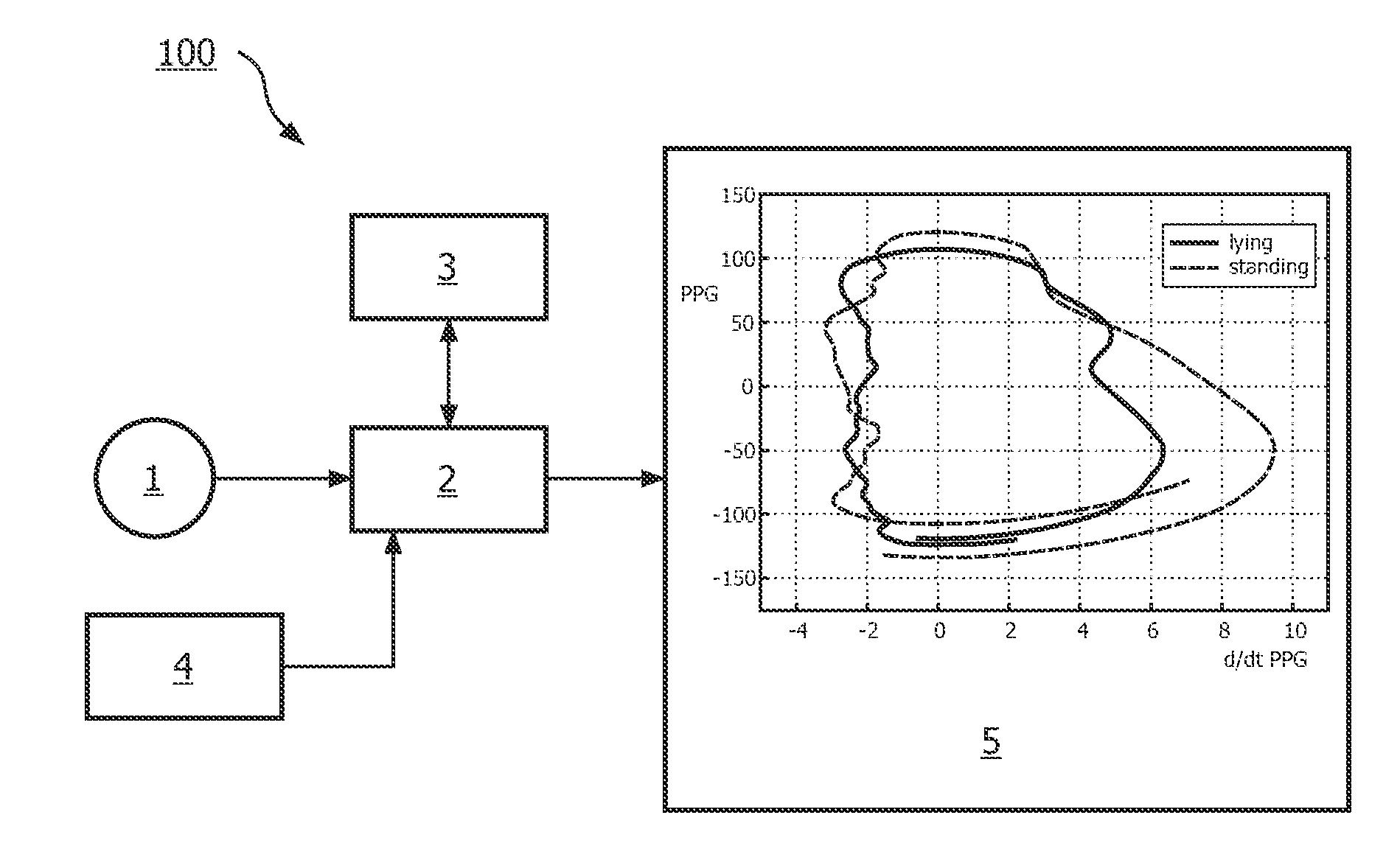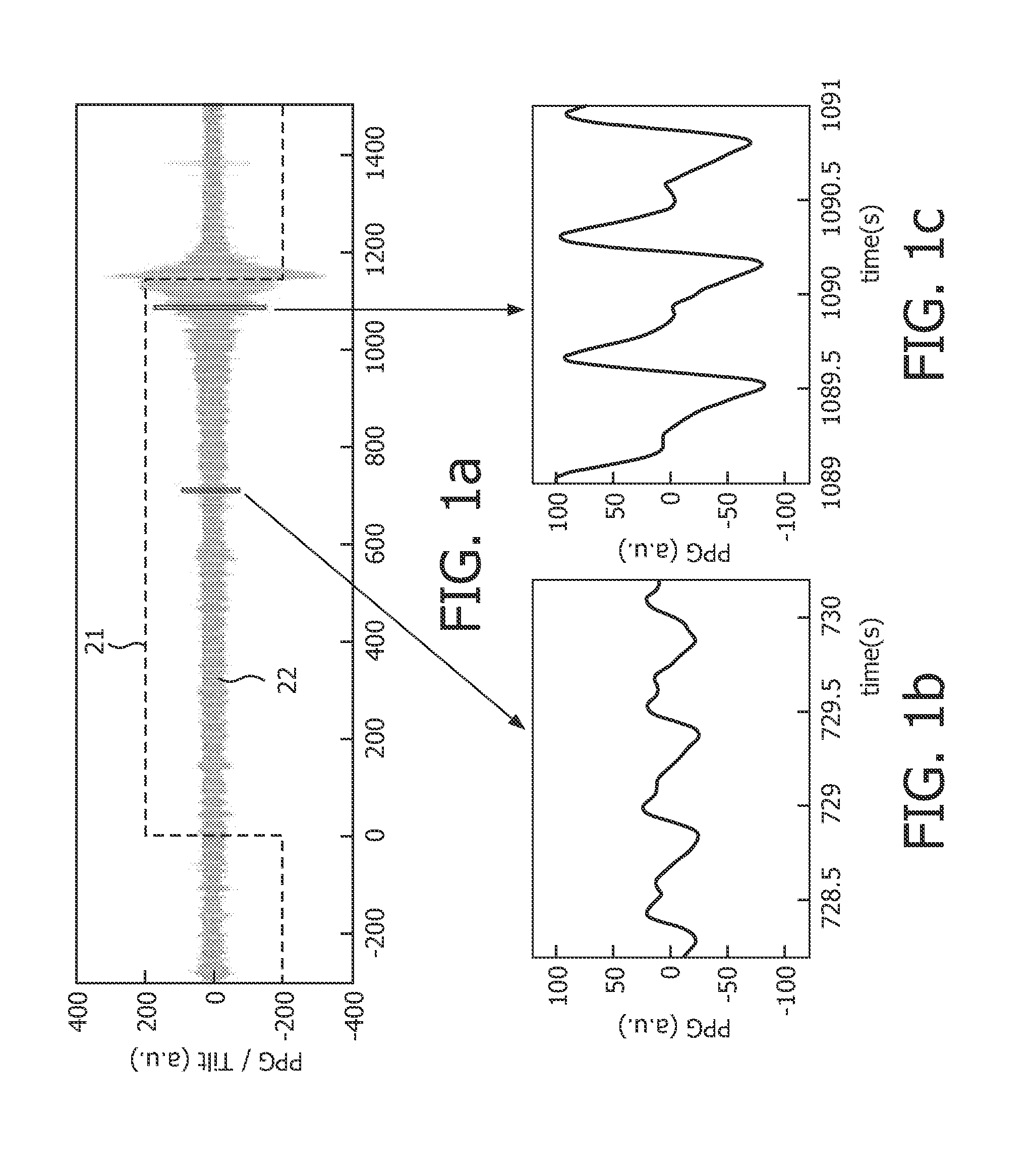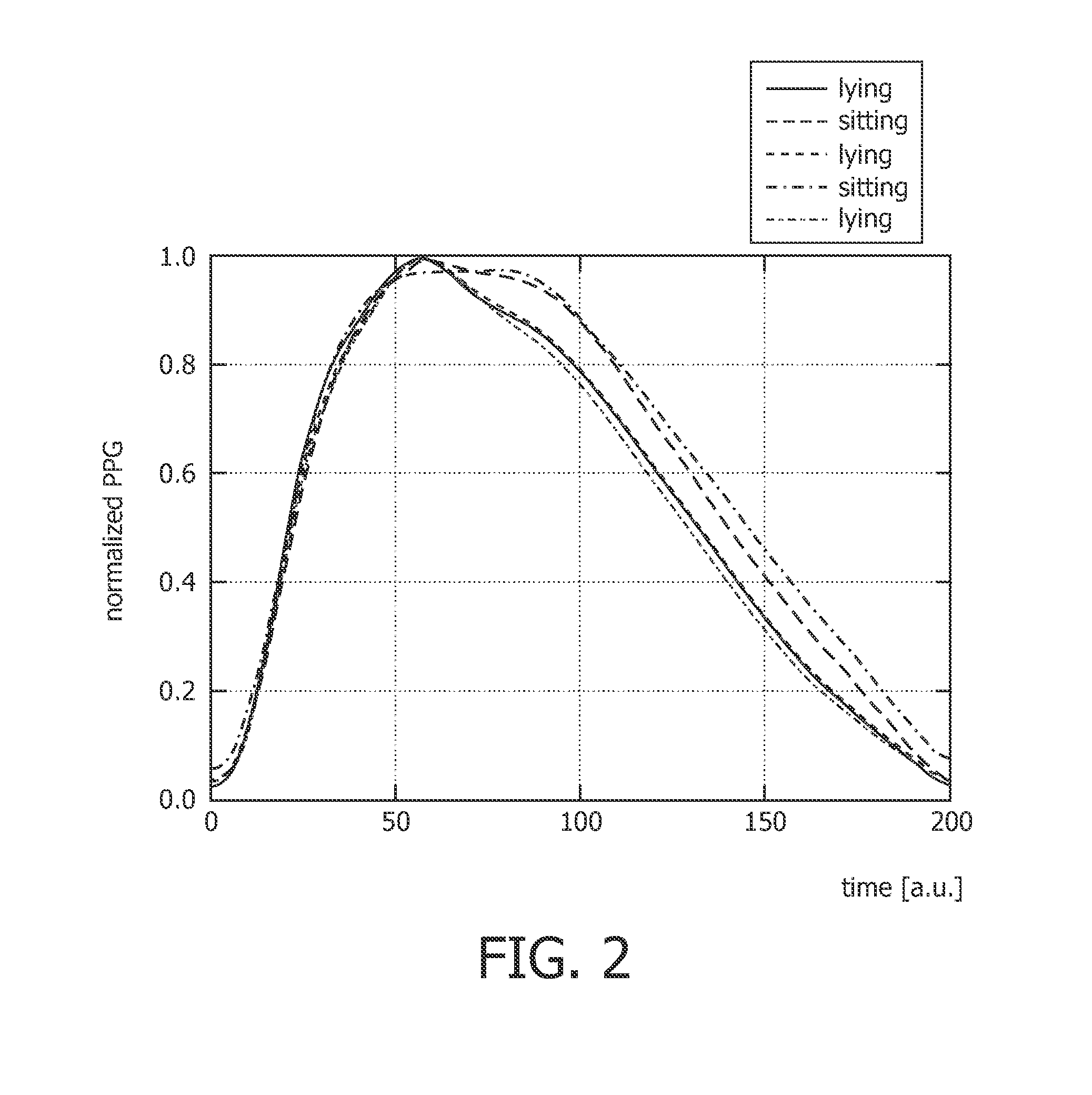Method and apparatus for processing photoplethymograph signals
a technology of plethysmograph and signal processing, which is applied in the field of method and apparatus for processing plethysmograph signals, can solve the problems of not using all information embedded in ppg waveform and its morphology, and the physician is not able to track and compare ppg waveform and morphology, and achieves the effect of more robustness
- Summary
- Abstract
- Description
- Claims
- Application Information
AI Technical Summary
Benefits of technology
Problems solved by technology
Method used
Image
Examples
Embodiment Construction
[0029]A photoplethysmograph (PPG) is an optically obtained plethysmograph, which is a volumetric measurement of an organ. It can be obtained by a pulse oximeter which illuminates the skin and measures changes in light absorption. A conventional pulse oximeter monitors the perfusion of blood to the dermis and subcutaneous tissue of the skin. Besides the ECG, the PPG signal is one of the most often acquired signals in clinics, especially in anesthesia or intensive care. Typically, the PPG is measured from the finger, ear or forehead. From this PPG signal the heart rate and the patient's SpO2 can be estimated. However, while currently only the heart rate and the patient's SpO2 are estimated routinely from the PPG signal, the PPG waveform provides additional information on a subject cardio-vascular state for detection of, for example, cardio-vascular responses of a subject during interventions.
[0030]As an example, the upper diagram a) of FIG. 1 shows the PPG morphology change during a h...
PUM
 Login to View More
Login to View More Abstract
Description
Claims
Application Information
 Login to View More
Login to View More - R&D
- Intellectual Property
- Life Sciences
- Materials
- Tech Scout
- Unparalleled Data Quality
- Higher Quality Content
- 60% Fewer Hallucinations
Browse by: Latest US Patents, China's latest patents, Technical Efficacy Thesaurus, Application Domain, Technology Topic, Popular Technical Reports.
© 2025 PatSnap. All rights reserved.Legal|Privacy policy|Modern Slavery Act Transparency Statement|Sitemap|About US| Contact US: help@patsnap.com



